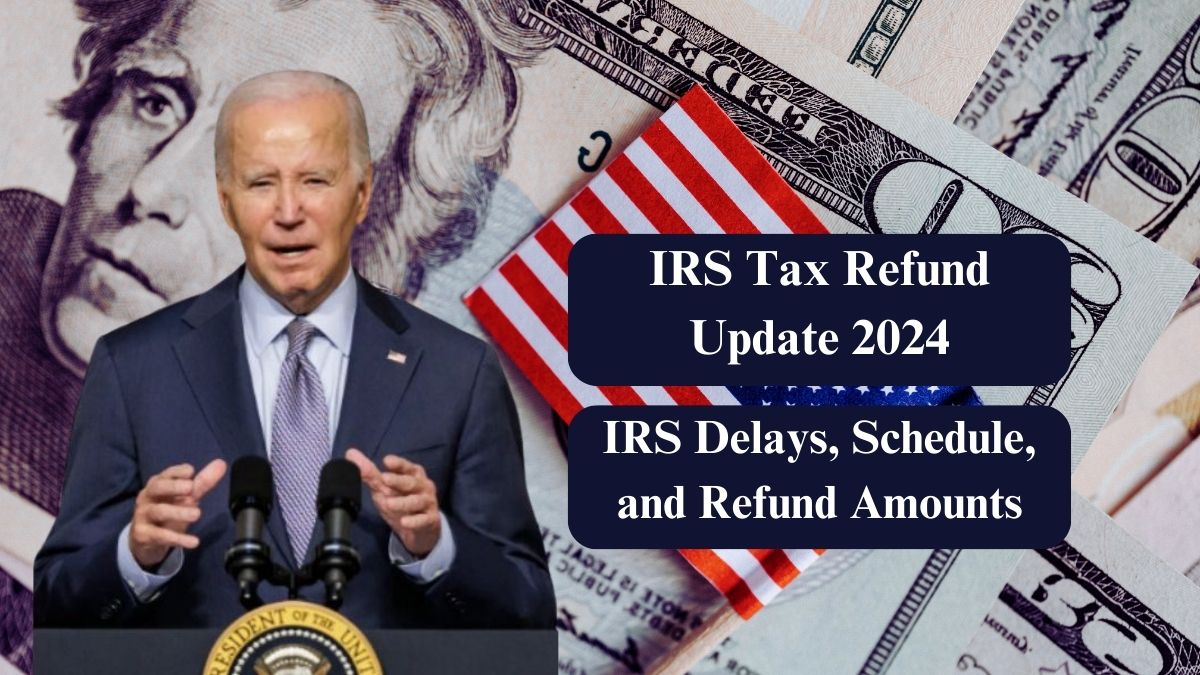In the USA, all citizens are mandated to file tax returns, and some may qualify for tax refunds. These refunds are typically issued when you have paid taxes throughout the year. Currently, the IRS Tax Refund Update 2024 is underway. If you have yet to receive your tax refund, there’s no cause for concern. We will share practical tips to help speed up the process of receiving your refund. Delays can occur, sometimes due to errors, including those made by the taxpayer.
Such mistakes can lead to unexpected postponements in receiving your refund. This process is specifically for US residents. In this post, we will detail how to qualify for a tax refund, review the Tax Credit Schedule for 2024, and identify common reasons for tax refund delays. By understanding these aspects, you can better navigate the process and avoid common pitfalls that lead to delays.
IRS Tax Refund Update 2024
Tax refunds are issued to eligible taxpayers after they file their returns, primarily benefiting those who have paid taxes throughout the year. Once tax returns are completed, there are several options for receiving the refunds. Taxpayers can opt to receive their refunds through mailed checks or direct deposits into their bank accounts. Additionally, there is the choice to invest the refund amount into US Savings Bonds. This comprehensive guide will not only outline the expected timeline for receiving IRS Tax Refund Update 2024 but also delve into the various reasons that might cause delays.
It will explore potential strategies that the government might employ to speed up the refund process. For the most current information regarding tax refunds in 2024, consult this guide. If you have yet to receive your tax refund, this guide will provide helpful solutions and steps to address and resolve the issue effectively.
| Title | IRS Tax Refund Update 2024 |
|---|---|
| Year | 2024 |
| Name of the Country | USA |
| Name of the Managing Authority | Internal Revenue Service (IRS) |
| Name of the Refund | General Tax Refund |
| IRS Tax Refund Eligibility 2024 | Qualified Tax Payers in US |
| Objective | Financial Assistance |
| Frequency of Tax Refund | Yearly |
| Tax Refund Schedule 2024 | Check this guide |
| Mode of the Tax Refund | Checks or Direct Deposits |
| Category of the Post | Finance |
| Official Web Portal | www.irs.gov |
Also Read- $1415 SSI Payments for September 2024: Important Dates and Eligibility Information
IRS Tax Refund Update Eligiblity 2024
- This Tax Refund is available to eligible taxpayers who have settled all their federal taxes with the Government throughout the year.
- To qualify, taxpayers must be residents of the US.
- Additionally, it is essential that the tax return is filed on or before the specified due date.
IRS Tax Refund Schedule 2024
The Tax Refund is typically processed within twenty-one days of submitting an electronic return. However, if you need to file an amended tax return, be prepared for a longer wait time; it could take about four to five weeks to receive your refund. There are several factors that could delay your refund beyond the expected timeframe. These factors might include discrepancies in your tax return, additional reviews by the IRS, or issues related to your bank account information. It is also possible that high volumes of returns or incomplete documentation can contribute to delays. If you experience any delay, it is advisable to check the status of your refund online or contact the IRS for further assistance.
- A high volume of tax refunds can slow down the issuance process.
- Amendments to the tax return may cause delays.
- Missing information on the tax return can lead to a delayed refund.
- Taxpayers who filed for an extension must submit their returns by October 15, 2024. After this date, no further opportunities for tax return filing will be provided by the Government.
IRS Tax Refund Delays 2024
We’ve previously covered various reasons that can cause delays in receiving your tax refund. Now, let’s delve into effective strategies for addressing these delays and explore practical tips to help you get your IRS Tax Refund Update 2024. One effective approach is to use tools such as the “Where’s My Refund” online portal and the IRS2Go mobile app. These tools are invaluable for tracking the status of your refund in real-time.
They provide updates on your refund’s progress and any potential issues that may arise. Additionally, ensuring that your tax return is complete and accurate, filing electronically, and opting for direct deposit can also significantly speed up the process. Here are more tips to help ensure you receive your refund as swiftly as possible:
- Review your tax return to identify any possible reasons for the delay. Missing information or errors on the return can lead to delays.
- If you have been waiting for more than six weeks, contact the IRS for assistance.
- The IRS might request additional information or clarifications about your tax return, so it’s crucial to stay alert for any notices or correspondence from them.
- To expedite your refund, make sure to file your tax return as early as possible.
FAQs
When Will the IRS Process Tax Refunds?
The IRS generally takes up to 21 days to process and issue refunds for electronically filed returns.
What Tools Are Available for Checking Refund Status?
The primary tools for checking the status of your refund are the “Where’s My Refund?” online tool and the IRS2Go mobile app.
What to Do If You Haven’t Received Your Refund on Time?
If you haven’t received your refund by the expected date, you should contact the IRS directly to inquire about the status.
How Can Taxpayers Avoid Refund Delays?
To minimize delays, taxpayers should file their returns electronically as it speeds up the processing time.
